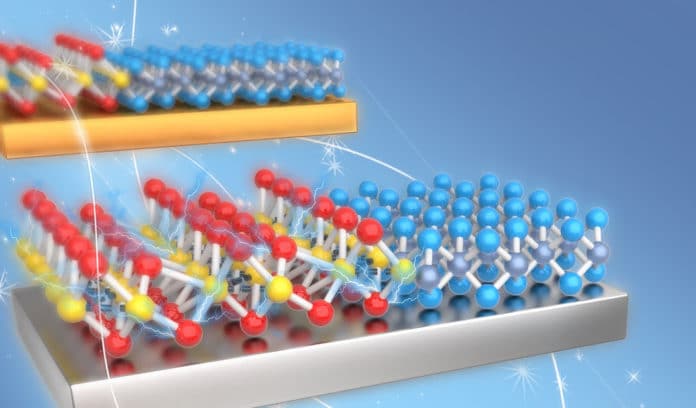Two-dimensional transition metal dichalcogenides (2D-TMDs) such as monolayer molybdenum disulphide (MoS2) are atomically thin semiconductors in which a layer of transition metal atom is sandwiched between two layers of chalcogen atoms, in the form MX2. They can exist in both a semiconducting 1H-phase and a quasi-metallic 1T’-phase, with each having a different crystal structure.
The 1T’-phase is particularly interesting as theoretical predictions show that it has the potential to be used in less conventional applications, such as supercapacitor electrodes and hydrogen evolution reaction catalysts. However, the quantity of 1T’-phase 2D-TMDs that can be obtained by converting them from the 1H-phase through a phase transition process is low. This potentially limits the use of such novel materials for a wide range of applications.
A research team led by Professor Andrew Wee from the Department of Physics at the National University of Singapore’s (NUS) Faculty of Science has discovered that while different 2D-TMD materials have their own intrinsic energy barriers when transiting from the 1H to the 1T’ structural phase, the use of a metallic substrate with higher chemical reactivity can significantly increase the 1H- to 1T’- phase transition yield.
This is a convenient and high-yielding method to obtain 2D-TMD materials in their 1T’ metallic phase. When the 2D-TMD material is placed in contact with the metal substrate, such as gold, silver, and copper, electric charges are transferred from the metal substrate to the 2D-TMD material.
Furthermore, it weakens the bond strength of the 2D-TMD structure significantly and increases the magnitude of the interfacial binding energy. This, in turn, increases the susceptibility of the 1H-1T’ structural phase transition. As a result, this enhanced interfacial hybridization at the interface of the two materials makes the 1H-1T’ structural phase transition much easier to achieve.
The NUS research team combined multiple experimental techniques and first-principles calculations in their research work. These include optical spectroscopies, high-resolution transmission electron microscopy and density functional theory based first-principles calculations to identify the phase changes – both 1H- and 1T’-phases – of the 2D-TMDs in the samples.
This study provides new insights into the influence of interfacial hybridization affecting the phase transition dynamics of 2D-TMDs. The findings can potentially be used in a model system for the controlled growth of 2D-TMDs on metallic substrates, creating possibilities for new 2D-TMDs-based device applications.
“The controllability of the semiconductor to metal phase transition at the 2D-TMD and metal interfaces can enable new device applications such as low contact resistance electrodes,” said Prof Wee.
